How to Draw a Dog
Learn how to draw a dog with this step-by-step tutorial. Perfect for artists of all skill levels!
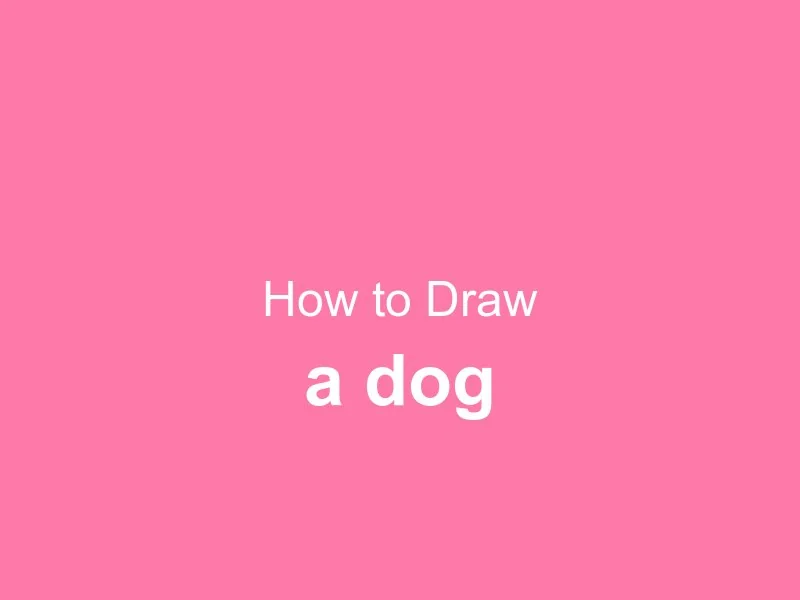
Materials You'll Need
- Pencil (HB or 2B)
- Paper
- Eraser
- Colored pencils (optional)
How to Draw a Dog
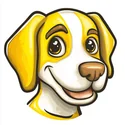
Drawing a dog is like capturing pure joy on paper—what could be more rewarding? With a few simple steps and a dash of patience, you'll go from blank page to a tail-wagging, ear-flopping, fetch-loving masterpiece. In this tutorial, we'll take you through the process of how to draw a dog step-by-step, making each part easy to follow, even if your last artistic venture was finger painting. From sketching the basics to adding those final, furry details, we've got you covered. Grab your pencil, channel your inner pup whisperer, and let's get started!
- Materials Required
- Step 1: Draw the Basic Shapes
- Step 2: Refine the Shapes
- Step 3: Sketch the Details
- Step 4: Add Shading and Texture
- Step 5: Final Touches
- Gallery of Dog Drawings
- How to Draw a Dog Easy
- Suggestions for Scenes and Settings for Dog Drawings
- Fun Facts About Dogs
Materials Required
-
Eraser
-
Drawing paper
Step 1: Draw the Basic Shapes
Begin your dog drawing by creating the fundamental shapes that will serve as the framework for the dog's anatomy. Start with a large circle to represent the head. Adjacent to the head, sketch a smaller circle for the snout. Extend a graceful curved line for the back and add a straight line for the tail, keeping in mind the natural posture of a dog. On top of the head circle, include two small circles for the ears.
Step 2: Refine the Shapes
In this step, refine the basic shapes to give your dog more definition and character. Add details to the legs by drawing four lines at the bottom of the body circle. Dogs often have sturdy and muscular legs, so ensure that your lines reflect this. Curve the lines for the back, tail, and snout to give them a more lifelike appearance. Pay close attention to the proportions and the overall balance of your drawing.
Step 3: Sketch the Details
Now it's time to bring your dog to life by adding essential facial features and details. Draw the eyes, which are typically almond-shaped, and place them above the snout. Sketch a triangular nose at the tip of the snout and a smiling mouth beneath it. These features contribute to the dog's friendly and endearing expression. Additionally, introduce fur texture to the dog's body, following the contours of its form. Pay attention to the flow of the fur, which usually runs from the head down to the tail.
Step 4: Add Shading and Texture
To make your dog drawing appear more realistic, incorporate shading and texture. Identify the areas where shadows naturally fall, such as under the chin, around the legs, and beneath the body. Gradually shade these areas using your pencil, ensuring that the transitions are smooth and natural.
To simulate the texture of fur, employ short, curved lines, replicating the direction in which the fur grows. This technique will provide depth and dimension to your drawing, enhancing its realism.
Step 5: Final Touches
As you approach the conclusion of your dog drawing, take a step back to assess the overall composition. Make any necessary refinements or enhancements to perfect your artwork. This is the stage where you can add final details, adjust shading, and fine-tune the expression and features of your dog. Be patient and meticulous in this phase to achieve a captivating and lifelike representation.
Congratulations! You have successfully learned how to draw a dog, taking your first steps on a creative journey that holds endless possibilities. As you continue to practice, you'll discover the joy of capturing the essence and character of not only dogs but also a myriad of other animals.
With dedication and perseverance, you can refine your skills, allowing you to create even more intricate and stunning renditions of the natural world. Whether you choose to explore different dog breeds, experiment with various poses, or embark on drawing other creatures, remember that every stroke of your pencil is a brushstroke of your imagination.
Keep nurturing your artistic talents, and you'll find that the world of art is boundless and ever-rewarding. Happy drawing, and may your creative endeavors continue to flourish!
Want to draw some specific dog breeds? Here are a few of our favorites to try:
Tip: To capture the essence of a dog in your drawing, begin by focusing on the basic shapes that define its structure—start with a circle for the head, an oval for the body, and rectangles for the legs. Use light, loose pencil strokes to outline these shapes, as this allows for easy adjustments later. Pay attention to the proportions; for instance, a dog's head is usually about one-third the size of its body. Once you have the basic shapes down, gradually refine them by adding features like the snout, ears, and tail, ensuring to observe the unique characteristics of the breed you're drawing. Finally, when adding details, don't forget the expressive eyes and fur texture, as these elements will bring your furry friend to life!
Gallery of Dog Drawings
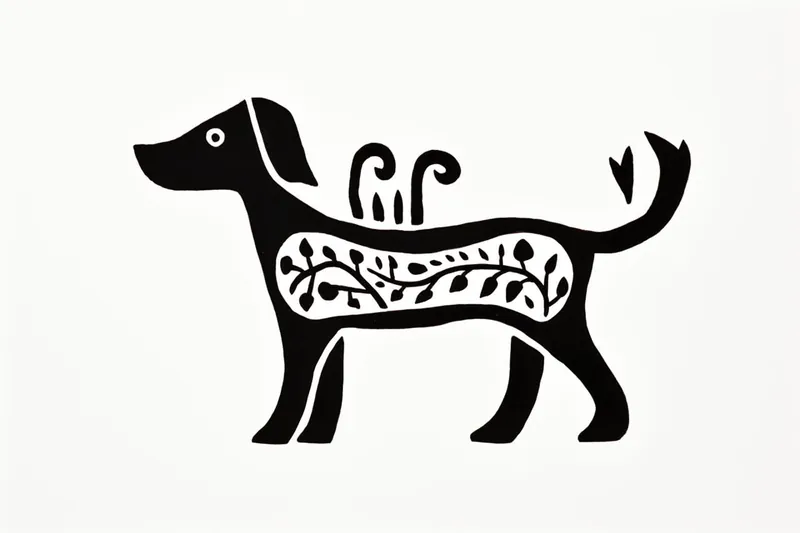
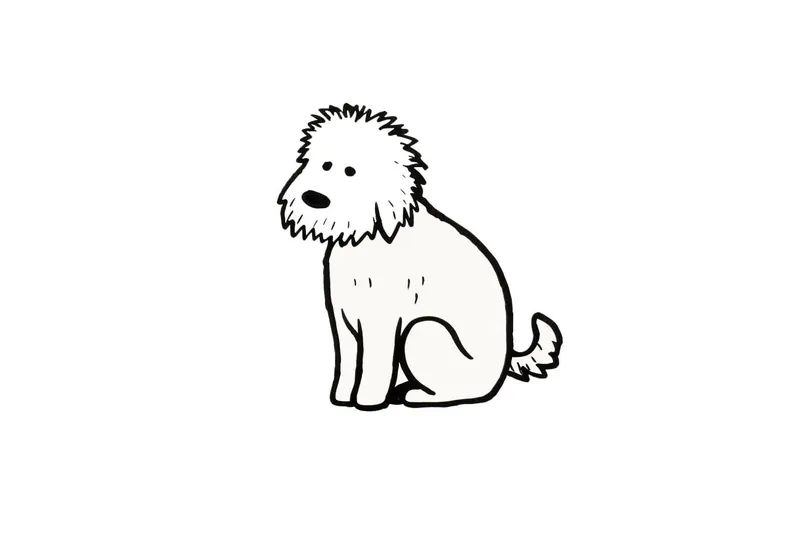
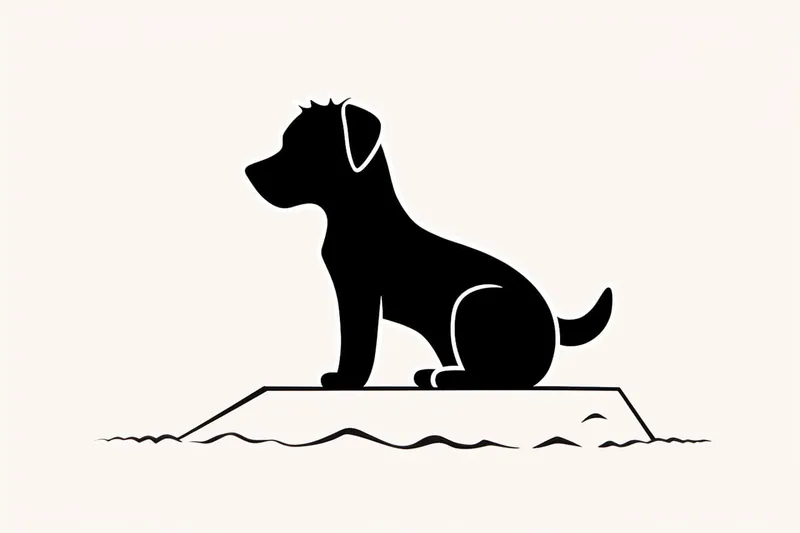
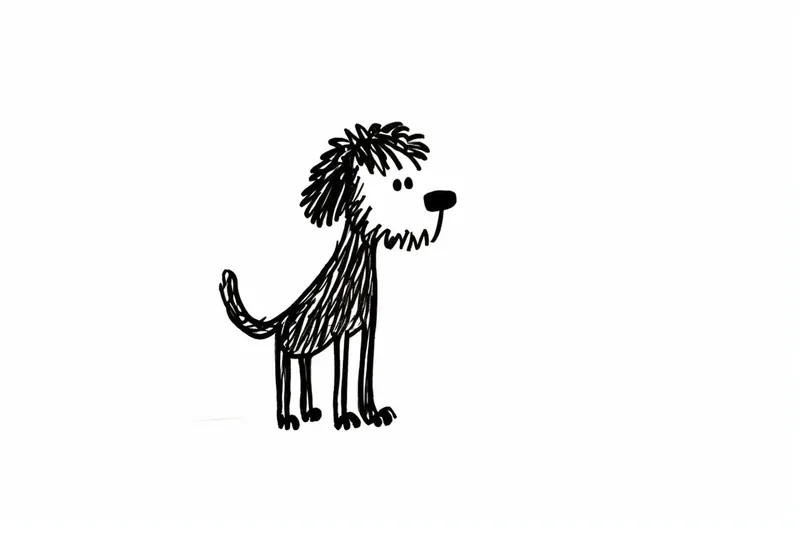
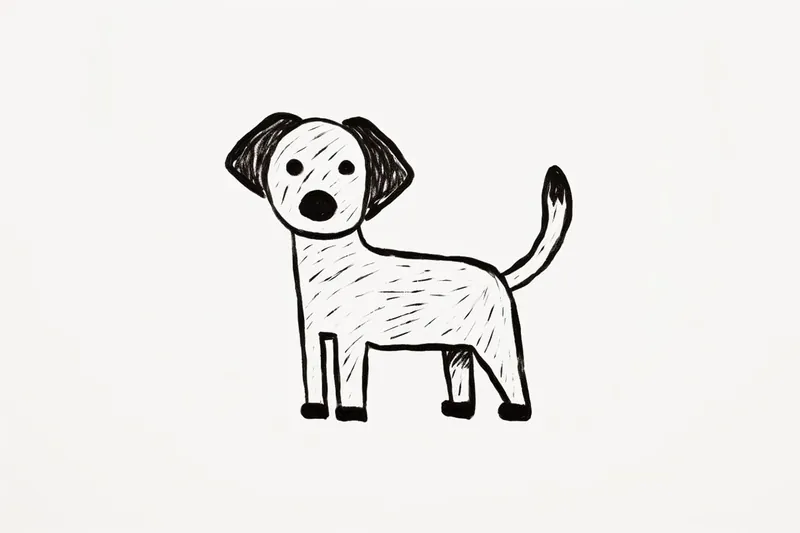
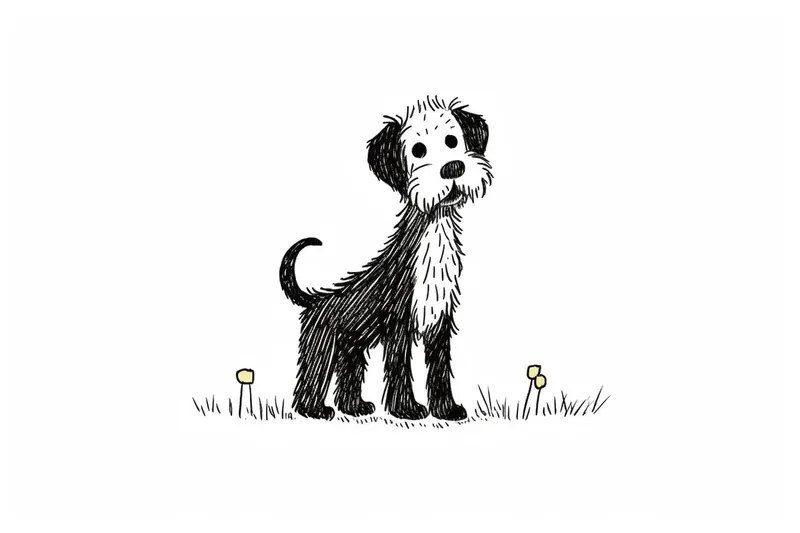
How to Draw a Dog Easy
If you're looking for a quick and fun way to draw a dog without getting into intricate details, you're in the right place. Follow these simple steps to create easy dog sketches and cartoons:
-
Start with a Circle: Begin by drawing a circle for the dog's head. Keep it light and loose; there's no need for perfection.
-
Add Floppy Ears: On top of the head, sketch two floppy ears. They can be round or triangular, depending on the style you prefer.
-
Draw the Body: Extend a curved line from the head to create the dog's back. Then, connect it to a round shape for the body.
-
Tail Wagging: Give your dog a happy tail by drawing a curved line at the back.
-
Facial Features: Add two dots for eyes, a round or oval shape for the nose, and a smiling curve for the mouth.
-
Legs and Paws: Extend simple lines down from the body to create the four legs. Add small ovals at the end of each leg for the paws.
-
Furry Details: To make your dog look furry, lightly sketch short, curved lines along its body.
Remember, the key here is simplicity and fun. Feel free to experiment with different expressions, poses, and sizes as you learn more techniques of how to draw a dog. These easy dog sketches are a great way to get started and bring a smile to your face. Happy drawing!



Suggestions for Scenes and Settings for Dog Drawings
-
In the Park: A joyful dog running or playing fetch in a vibrant park setting, with trees, a walking path, and perhaps other dogs and owners in the background.
-
Beach Adventure: A dog frolicking along the shoreline, with waves gently lapping at its paws, and a beautiful sunset or sunrise painting the sky.
-
Cozy Home Scene: A relaxed dog lying by a warm fireplace, with a cozy blanket and its favorite toy nearby, embodying a sense of peace and comfort.
-
Mountain Hike: A scene capturing a dog exploring mountain trails, with panoramic views of the landscape below, showcasing the spirit of adventure.
-
Snowy Day: A playful dog romping through fresh snow, with snowflakes falling and perhaps a snowman or children sledding in the background.
-
On the Road: A dog sticking its head out of a car window, enjoying the breeze, set against the backdrop of an open road stretching into the distance.
-
At the Dog Park: A dynamic scene at a dog park, with dogs of various breeds interacting, playing, and showcasing their unique personalities.
-
Urban Stroll: A dog walking on a bustling city street, with skyscrapers, pedestrians, and the hustle and bustle of urban life around it.
-
Guardian of the House: A loyal dog sitting at the front porch or gate, watching over its home, reflecting the bond and protective instinct towards its family.
-
Under the Stars: A serene scene of a dog resting in a camping site, with a tent, a campfire softly glowing, and a star-filled sky overhead, highlighting a sense of companionship and adventure in the wilderness.
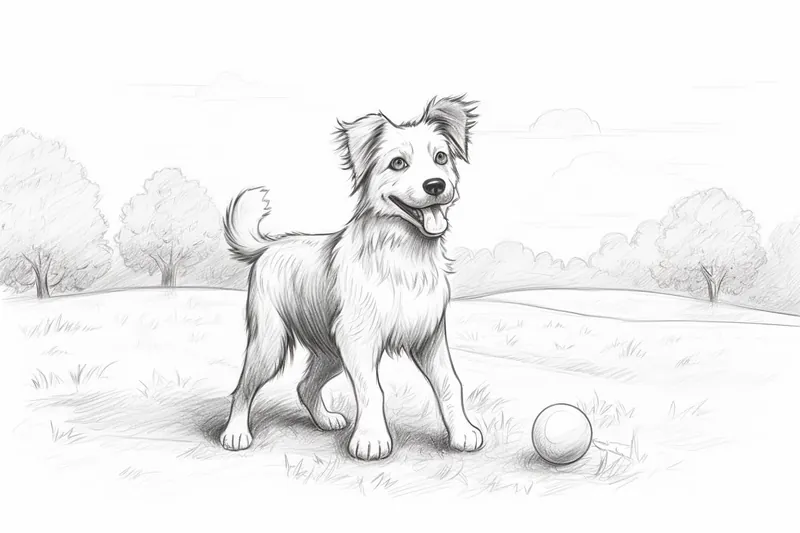 Playing at the park
Playing at the park
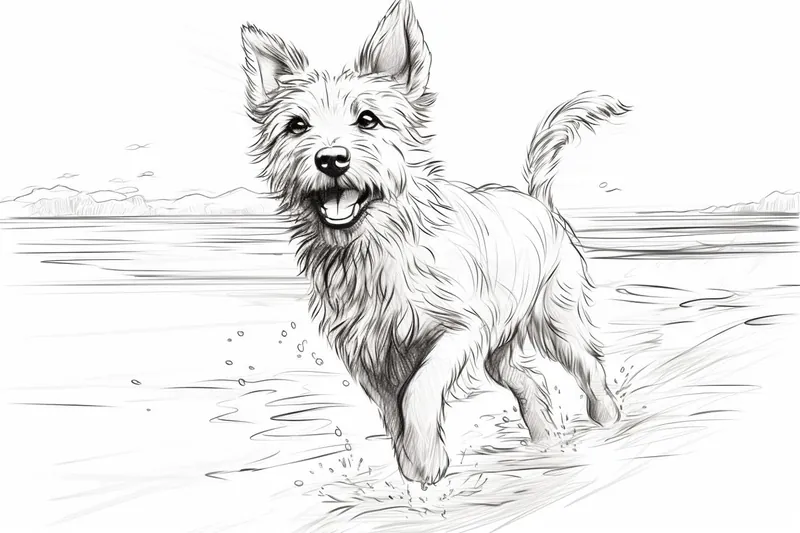 Playing at the beach
Playing at the beach
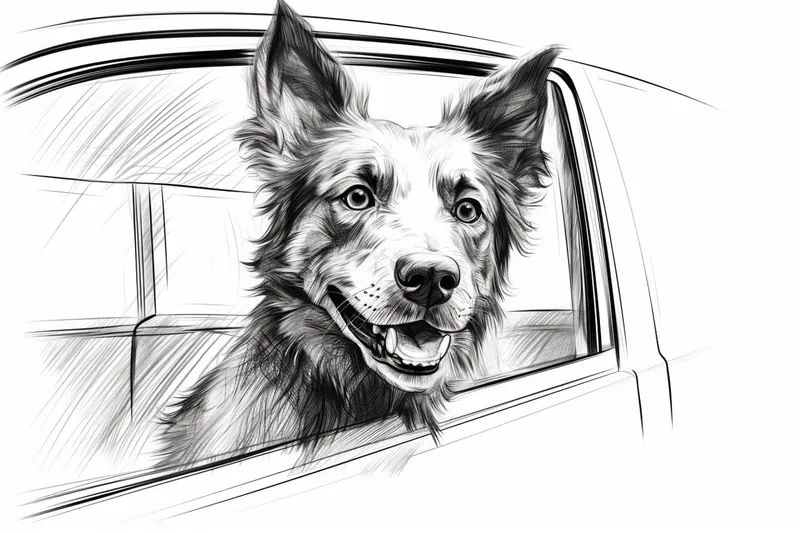 Head out the car window
Head out the car window
Dog Draw Battle
Two of our community artists compete to see who can draw the better dog. Who do you think won the battle? Let us know in the comments section below!
Dog Draw Battle
Who drew it better? Cast your vote below!

Ava Delgado
The Dot Diva


Marcus Flint
The Dynamic Draftsman

Be the first to vote in this epic Draw Battle!

Ava Delgado (The Dot Diva)
A graphic designer who fell in love with stippling, Ava builds form and gradient through thousands of tiny dots. Her patience and precision define her signature approach.


Celeste Marlow (The Shading Sorceress)
A fine-arts graduate turned Yonderoo contender, Celeste is famed for her mastery of light and shadow. Her cross-hatched textures give every form dramatic depth, earning her "Sorceress" status among peers.

Fun Facts About Dogs
-
Dogs are known for their loyalty and have been human companions for thousands of years.
-
There are over 340 different dog breeds around the world, ranging in size from the tiny Chihuahua to the massive Great Dane.
-
Dogs have a highly developed sense of smell, with some breeds being capable of detecting certain diseases in humans.
-
The Basenji breed is known as the "barkless dog" because it produces a yodel-like sound instead of a traditional bark.
-
Dogs use facial expressions, tail wagging, and vocalizations like barking and growling to communicate with humans and other animals.
-
A dog's nose print is unique, much like a human fingerprint.
-
Throughout history, dogs have been used for various tasks, including hunting, herding, search and rescue, and as service animals.
-
Many cultures have cherished dogs, considering them as symbols of protection, fidelity, and friendship.
-
The tallest dog ever recorded was a Great Dane named Zeus, who stood over 44 inches tall at the shoulder.
-
Dogs are highly adaptable, living in diverse environments from urban apartments to sprawling rural farms.